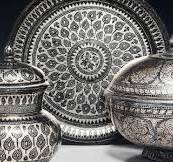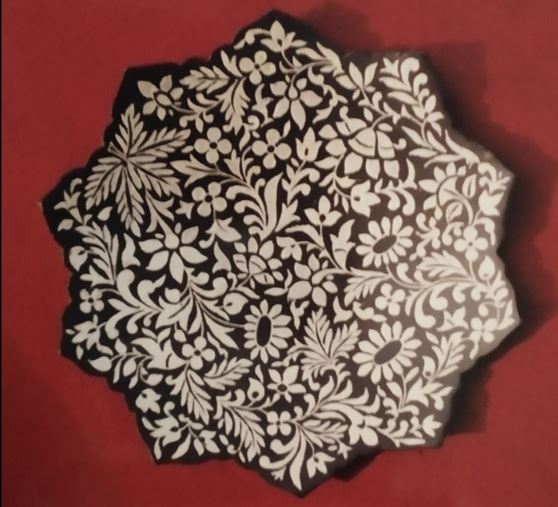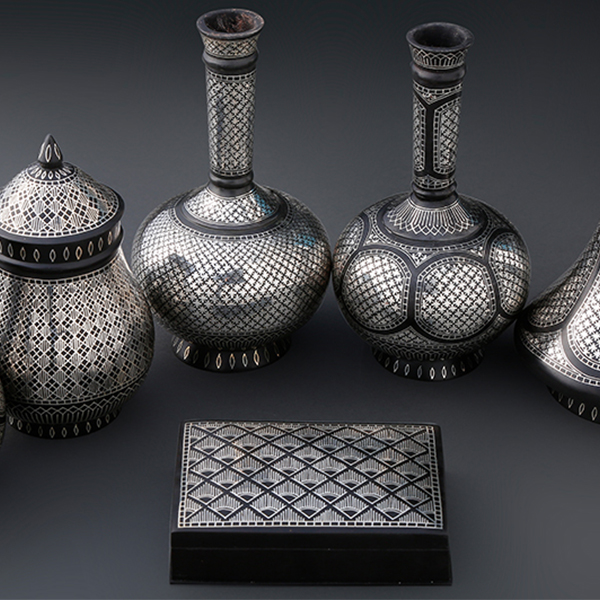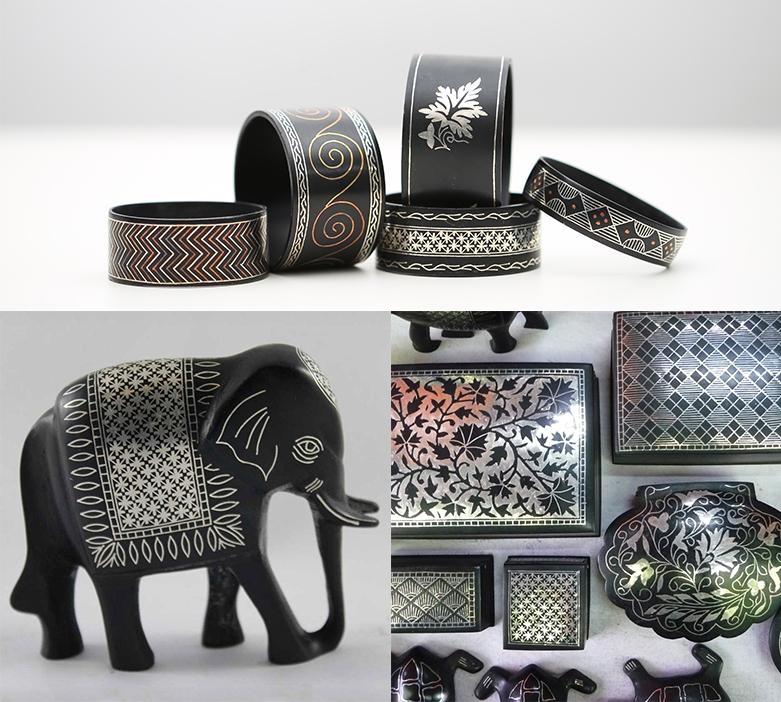
Discover the enchanting world of Bidri art, a true testament to India’s rich heritage. The underlying concept is ”beauty in contrast”. One look at the ”objects d’art” created reveals the intricate and excellent workmanship involved.
CraftCrest India is delighted to present the captivating history, intricate techniques, and modern-day relevance of Bidri, a craft that seamlessly blends artistry with cultural significance.
History and Evolution

Bidri art originated in Bidar, Karnataka, under the patronage of the Bahmani Sultans (1347-1527 A.D) and later under the Baridi Sultanate (1489-1619 A.D). The craft has Persian roots and flourished under the influence of Persian artisans who brought their expertise in metalwork to India. It was first brought to India by noted Sufi Khwaja Moinuddin Hasan Chishti in the form of utensils. The art form developed in the kingdom that was a mix of Turkish, Persian, and Arabic influences which were intermingled with the local styles and thus a unique style of its own was born.
Over the centuries, Bidri evolved, incorporating indigenous techniques and designs, becoming synonymous with the Deccan region’s cultural identity. Bidri gained prominence with royal patronage. Widespread use in palaces, courts, and as royal gifts. It spread to other places like Lucknow of Awadh (now Uttar Pradesh), Purnea in Bihar and Murshidabad in Bengal.
The Skilled Techniques of Bidri Art
The techniques of making Bidri are very interesting, and the terms are in Persian as given below.
- Tarkashi– which means inlay of wire.
- Taihnishan – inlay of sheet
- Zarnishan – low relief
- Zarbulund – high relief
- Aftabi – cut out designs in overlaid metal sheet.
Mostly a combination of techniques is used to make the final piece. The different objects of Bidriware can vary in weight due to a difference in the composition of alloys. The heavier ones have more lead in them.



Methodology Involved in Bidri Art
Bidri art is distinguished by its unique metal inlay technique, combining zinc alloy with copper or silver or gold. The mixture of zinc and copper is in the ratio of 16:1. Copper is added to make zinc take the polish better. Craftsmen, known as “Sutradhars,” employ a series of meticulous steps to create the exquisite pieces that characterize Bidri craftsmanship. Crafting of a Bidri article involves four main steps.



- Mould making – A mix of soil, castor oil and resin is used to prepare a mould.
- Melting the alloy and casting the article – In this mould, molten metal alloy of zinc and copper (in the ratio of 16:1) is poured.
- Engraving and Inlay – The engraving tool, a kalam or metal chisel of various shapes and points, is used to engrave the designs which are drawn free hand. Traditionally, various Persian inspired motifs such as flowers (known as Asharfi-ki-booti), leaves (vine creepers), geometric designs, etc. were commonly done on the items.Inlaying work is done by silver sheet or wire (gold at times too) which are deftly and skillfully placed engraved grooves. The inlaid design is then buffed to smooth the surface.
- Oxidation and Polishing – After final filing and/or buffing, the bidriware is now ready for the final blackening process. A special variety of soil which is available only in the unlit portions of the Bidar fort is used. The soil is mixed with ammonium chloride and water to produce a paste which is then rubbed onto a heated Bidri surface. The paste selectively darkens the body while it has no effect on the silver inlay.In Polishing, the final piece is rubbed with coconut oil to brighten the black surface and reveal the silver or gold inlay.
Modern Day Relevance of Bidri Art
Bidri art, with its timeless appeal, has transcended the boundaries of history to find relevance in the contemporary world.
- Artistic Adaptations: Contemporary artists experiment with Bidri, creating innovative designs. The craft adapts to modern tastes without compromising its traditional essence.
- Global Recognition: Bidri has garnered international acclaim for its exquisite craftsmanship. Exhibitions and collaborations with global designers have elevated its profile.
- Sustainable Art: Bidri artisans often employ sustainable practices in materials and processes. CraftCrest India supports eco-friendly initiatives within the Bidri craft community.
- Functional Art: Bidri art extends beyond decorative pieces to functional items like utensils and jewelry. The marriage of tradition and utility enhances its contemporary relevance.
Craft Sustenance -Support from Government & Other Entities
- Government Initiatives- These include financial support from Ministry of textile & other bodies, skill development programs and providing exhibition platforms for a global reach and market expansion.
Bidri craft has been granted a Geographical Indication (GI) tag, providing legal protection and recognition, preventing unauthorized duplication of the craft.
2. Non-Governmental Organizations (NGOs)- Several NGOs offer Craft revival services in the form of resources, market linkages, platforms to showcase to a wider national and global audience and educating the children of artisans, ensuring the craft is passed down to next generation.
Conclusion

Bidri art, with its deep-rooted history, intricate techniques, and modern-day adaptability, remains a jewel in India’s artistic crown. Today, bidri products comprise necklaces, pen stands, vases, ashtrays, earrings, bangles, card holders, pen drive holders, keychains, wall hangings, boxes, etc. We invite you to explore the timeless allure of Bidri, where craftsmanship meets cultural resonance, creating pieces that transcend eras and continue to captivate hearts around the world.
CraftCrest India is committed to showcasing the modern-day significance of Bidri, making it accessible to a global audience.Shop with us to explore this black metal magic at https://craftcrestindia.com/product-category/handicraft/


Nice post